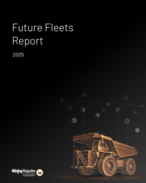This article is 17 years old. Images might not display.
Republican senator Johnny Isakson of Georgia, also a ranking member of the Senate Subcommittee on Employment and Workplace Safety, said he hopes the release of the report brings the answers needed for those most affected – the workers’ survivors.
“I hope [the] report gives the families of those who perished in the Sago disaster further understanding about the accident that took the lives of their loved ones. We have made great progress over the last year, and we will continue to work to make mines across the country safer,” Isakson said.
“I firmly believe the legacy of the Sago tragedy is following the lessons we have learned so that future generations of miners do not suffer the same fate.”
Isakson said in a statement earlier this month that he was given the opportunity to meet with the 12 families of the workers whose lives were lost at the West Virginia mine last January 2. Shortly after, he said he began an instrumental role in drafting bipartisan legislation for mine safety regulation improvement and efforts to reduce risks for all miners.
Other committee members include senators Mike Enzi of Wyoming, Edward Kennedy of Massachusetts, and West Virginia legislators Jay Rockefeller and Robert Byrd.
The resulting rulings, which are in part encompassed in the MINER Act of 2006, “established timelines for new and better mine safety technology, required mines maintain and continuously update emergency response plans, and raised the criminal penalty cap as well as the maximum civil penalty for flagrant violations of the Federal Mine Safety and Health Act,” he said.
He also outlined the continuous improvement by both self-contained self-rescuer providers and researchers, as well as wireless communication companies which are working to develop the best system for use in mines nationwide.
“Since the passage of the MINER Act, more than 10,000 self-contained self-rescue units have been placed in underground mines, and more are expected to be added as soon as they can be manufactured,” Isakson said.
“In addition, miners are being trained and re-trained in the use of the self-contained self-rescue units, which provide respiratory protection for persons escaping or evacuating mines.”
Escape and rescue technology is also on an upward swing, according to Isakson.
“Dozens of coal mines have implemented new state-of-the-art systems to track miners while underground and to provide better communication in the wake of an accident,” he said.
“New mine rescue teams have been added in more than 30 of the nation’s underground mines with more on the way.”























